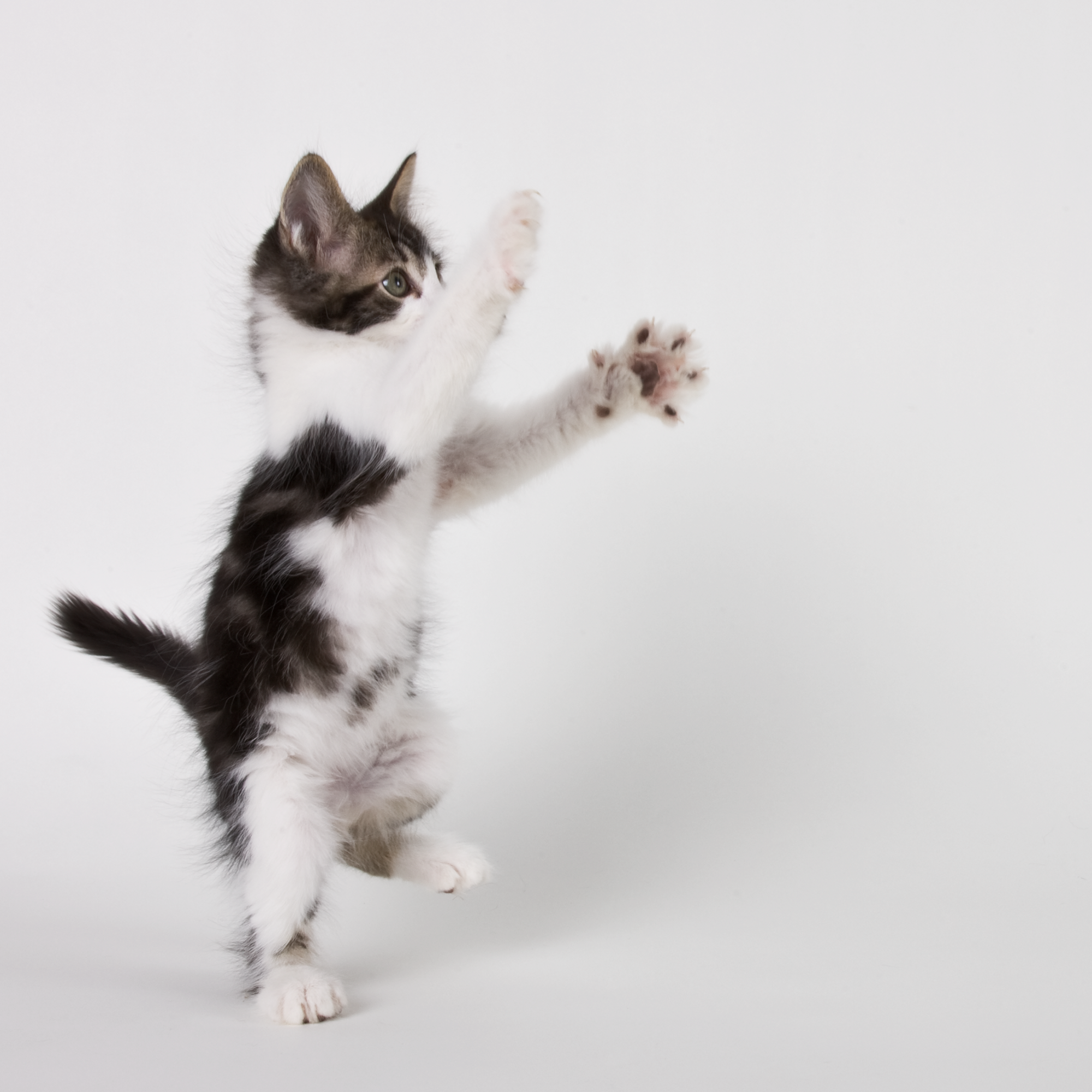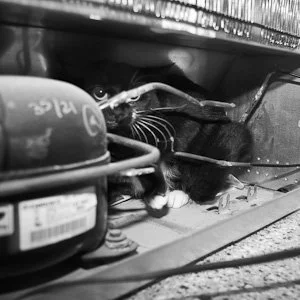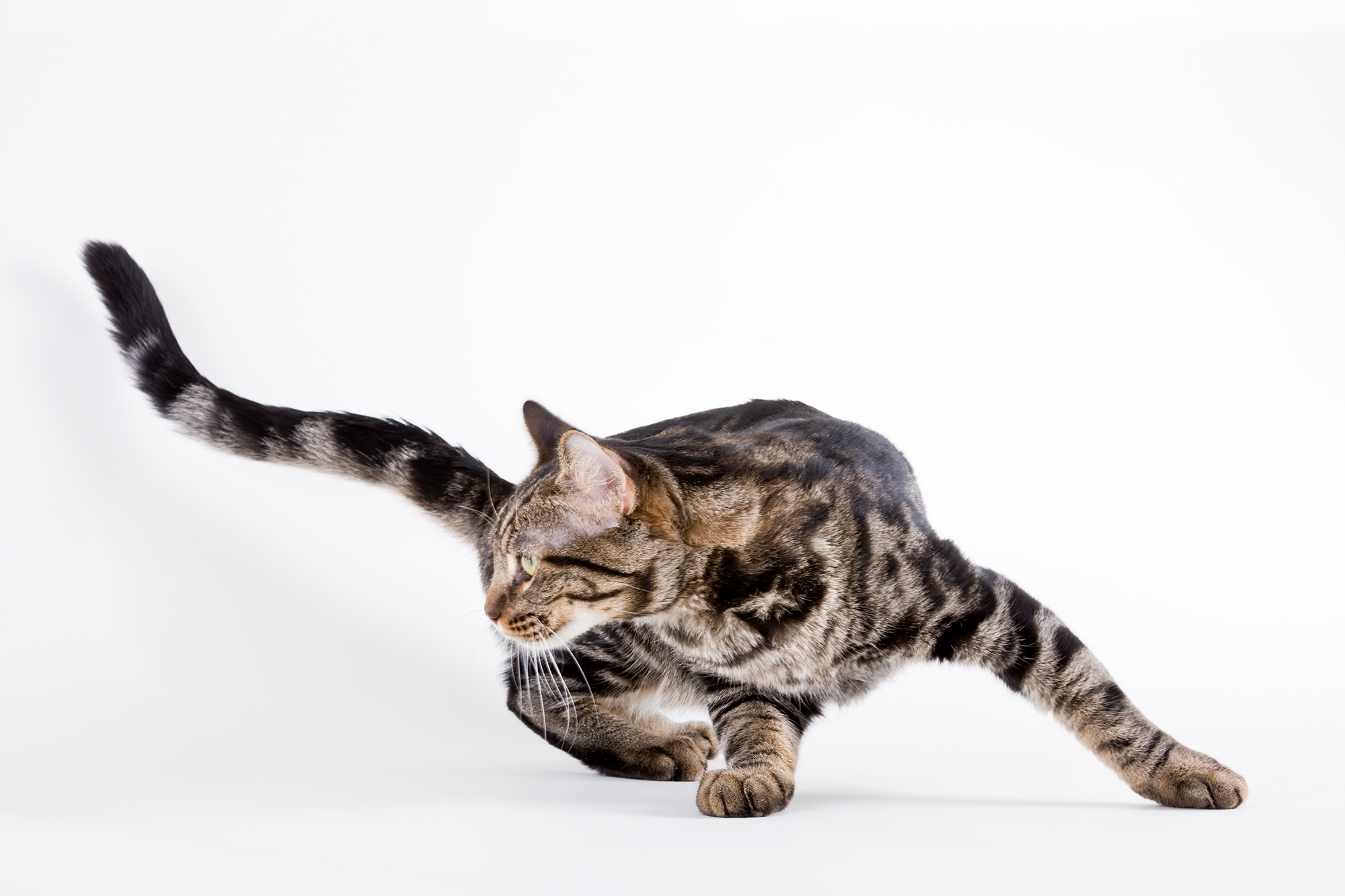Preparing Your Cat for Their Fine Art Portrait Session
Cats being authentically themselves create the most compelling portraits.
Last week I shared insights about preparing dogs for their portrait sessions, so it’s only fitting that this week’s topic be about photographing their feline companions. After nearly two decades of creating fine art portraits throughout Tucson, I can tell you that cats present entirely different challenges—and often surprising rewards. Some of my most striking gallery pieces feature cats whose natural elegance and mysterious expressions translate beautifully into museum-quality artwork.
Cats are nature’s supermodels
Understanding the Feline Mindset
Cats operate on their own terms, which means our approach needs to be completely different from dog sessions. Where dogs often respond to direction and treats, cats require patience, respect for their boundaries, and an understanding that they'll participate when they choose to. This isn't a limitation—it's actually what creates those authentic, captivating expressions that make for compelling fine art.
In my mobile studio setup, I've learned to work with a cat's natural curiosity rather than against their independence. They'll investigate my lighting equipment, claim the backdrop as their territory, and often give me their best poses when they think the session is over.
The Week Before: Less is More
Unlike dogs, cats don't need extensive preparation. In fact, disrupting their routine too much often backfires. Keep their schedule as normal as possible—same feeding times, same sleeping spots, same daily rhythms.
Grooming should follow the same rule I mentioned for dogs: if they need professional grooming, schedule it at least a week before our session. However, most indoor cats maintain themselves beautifully and only need a gentle brushing to remove loose fur. Long-haired breeds benefit from daily brushing in the days leading up to the session to prevent matting and help their coat photograph smoothly under professional lighting.
The Day of the Session: Creating the Right Environment
Here's where my mobile studio approach really shines for cat photography. Cats are territorial creatures, and asking them to perform in a strange location rarely works well. By bringing professional lighting to their familiar environment, we eliminate the stress of travel and new surroundings.
Before I arrive, minimize household disruptions. If you have multiple cats, consider whether they work better together or separately—some cats are more confident with their companions nearby, while others prefer individual attention.
Keep their routine as normal as possible. Don't skip breakfast hoping they'll be more treat-motivated. A slightly hungry cat is often an anxious cat, and anxiety shows in their expressions.
Playtime can lead to fantastic photos
What Actually Works with Cats
Treats: Bring their absolute favorites, but don't expect the same treat-driven cooperation you might get from dogs. Cats are more motivated by curiosity and comfort than food rewards during a session.
Toys: Feather wands, laser pointers, or small toys that trigger their hunting instinct can create beautiful alert expressions. However, some cats become overstimulated by toys, so we'll test this carefully.
Familiar Items: Their favorite blanket, cat tree, or even a cardboard box can serve as props while keeping them comfortable. I've created stunning portraits of cats in their preferred sleeping spots—authenticity often trumps formal posing.
Skip the Catnip: While it might seem like a good way to relax your cat, catnip actually creates that glazed, "stoned" expression that doesn't translate well to museum-worthy wall hangings. We want alert, engaged eyes—not dilated pupils and that slightly vacant catnip stare.
The Technical Challenges (That I Handle)
Photographing cats requires different technical approaches than dogs. Their eyes reflect light differently, their movements are more subtle and sudden, and their coat textures—especially on black cats—demand specific lighting ratios. My MFA training in studio lighting becomes crucial when working with a black cat's fur texture or capturing the intricate patterns in a tabby's coat.
Cats also tend to move in quick, fluid motions rather than holding poses. This means I'm constantly adjusting focus and exposure while watching for those perfect micro-expressions—the slight head tilt, the moment of intense focus, the sleepy contentment that makes for compelling portraiture.
Working with Different Cat Personalities
One of the rare sessions where the only photo was the 'before' picture—cat safely returned to his crate, dignity intact.
The Shy Cat: These sessions require extra patience, and this is where an on-site pre-consultation becomes even more valuable than it is for other sessions. Scheduling a brief visit before our photography session gives shy cats the opportunity to get to know me on their terms—they can hear my voice, observe me talking calmly with the people they own, and assess whether I'm a threat or simply another human who understands their rules. By the time I return with my mobile studio equipment, I'm no longer a complete stranger disrupting their territory. I often spend significant time just being present while they observe from their safe space, and some of my most beautiful portraits feature previously hiding cats who eventually approached out of curiosity. That said, you know your cat best. If they need extra time getting used to strangers, that's something I need to know in advance. However, some cats never warm up to new people, and if that's the case, it's important to understand that a cat hiding under the bed isn't likely to result in a successful session—we may need to talk about rescheduling or a refund. In all my years photographing cats, I've only had two sessions that didn't result in any usable photos—both were rescue situations where one cat wedged themselves into a reclining chair mechanism and the other somehow worked their way behind a refrigerator—and just a handful that yielded only a few images. The vast majority of shy cats eventually warm up enough to create beautiful portraits.
The Social Cat: They'll often want to investigate me and my equipment, which can lead to wonderful close-up opportunities. These cats sometimes give me their best poses while "helping" with the setup.
The Senior Cat: Like older dogs, senior cats hold special significance. Their wise, knowing expressions often create the most emotionally resonant portraits. I adjust everything for their comfort—lower positioning, shorter sessions, working around their preferred spots.
Managing Realistic Expectations
Cats won't perform on command, and that's perfectly fine. Some of the most captivating cat portraits happen when they're simply being themselves—grooming, stretching, or giving me that classic "slightly judgmental" expression that cat owners know so well.
A successful cat session might yield fewer total images than a dog session, but the ones we capture often have that distinctive feline elegance that translates beautifully into fine art. Quality over quantity is especially important with cats.
Grace in movement
The Artistic Advantage
Here's something I've discovered through my volunteer work photographing shelter cats: they naturally understand dramatic lighting. Cats position themselves in attractive light instinctively, and they're comfortable with the kind of directional lighting that creates depth and mood in fine art photography.
Their natural poses—the regal sitting position, the elegant stretch, the focused hunting crouch—are inherently photogenic. Unlike dogs, who might need direction to achieve attractive positioning, cats often arrange themselves beautifully without any guidance.
Session Day Strategy
When I arrive with my mobile studio equipment, expect your cat to be curious about the setup. This investigation period often provides excellent candid shots. I'll work with whatever mood they're in—playful cats get action shots, sleepy cats get contemplative portraits, alert cats get those stunning direct-gaze images.
Sessions with cats often feel more collaborative. They'll show me their preferred angles, claim certain spots as theirs, and sometimes surprise me with unexpected poses. This is where that "artistry meets compassion" philosophy really matters—respecting their agency while creating professional artwork.
A Personal Perspective
Through photographing cats at both animal shelters and in family homes, I've learned that feline portraits require a different kind of patience and observation. Cats reward quiet confidence and respect for their space with some of the most striking expressions you'll ever see in pet photography.
Whether you're celebrating a new kitten, honoring a beloved senior cat, or simply wanting to capture their unique personality in fine art, the key is working with their nature rather than against it. The results—those knowing eyes, that natural elegance, that unmistakable feline presence—create museum-quality portraits that families treasure for generations.
Ready to create museum-quality fine art of your feline companion? Contact me at (520) 301-3340 or visit tucsonpetphotography.com to learn more about our session options throughout the Tucson area.





